Multiphoton FLIM Analyses of Native and UVA-Modified Synthetic Melanins
- PMID: 36901948
- PMCID: PMC10002570
- DOI: 10.3390/ijms24054517
Multiphoton FLIM Analyses of Native and UVA-Modified Synthetic Melanins
Abstract
To better understand the impact of solar light exposure on human skin, the chemical characterization of native melanins and their structural photo-modifications is of central interest. As the methods used today are invasive, we investigated the possibility of using multiphoton fluorescence lifetime (FLIM) imaging, along with phasor and bi-exponential fitting analyses, as a non-invasive alternative method for the chemical analysis of native and UVA-exposed melanins. We demonstrated that multiphoton FLIM allows the discrimination between native DHI, DHICA, Dopa eumelanins, pheomelanin, and mixed eu-/pheo-melanin polymers. We exposed melanin samples to high UVA doses to maximize their structural modifications. The UVA-induced oxidative, photo-degradation, and crosslinking changes were evidenced via an increase in fluorescence lifetimes along with a decrease in their relative contributions. Moreover, we introduced a new phasor parameter of a relative fraction of a UVA-modified species and provided evidence for its sensitivity in assessing the UVA effects. Globally, the fluorescence lifetime properties were modulated in a melanin-dependent and UVA dose-dependent manner, with the strongest modifications being observed for DHICA eumelanin and the weakest for pheomelanin. Multiphoton FLIM phasor and bi-exponential analyses hold promising perspectives for in vivo human skin mixed melanins characterization under UVA or other sunlight exposure conditions.
Keywords: BZ-AA pure benzothiazine; DHBTCA pure benzothiazole; DHI; DHICA; Dopa; Dopa-Cys; HPLC chemical analysis; UVA exposure; eumelanin; mixed eu-/pheo-melanins; multiphoton FLIM imaging; phasor and bi-exponential fitting analyses; pheomelanin.
Conflict of interest statement
The authors declare that they have no competing financial interest. A.-M.P., T.B., S.B. and S.D.B. are employees of L’Oréal Research and Innovation. S.I. is consulting for L’Oréal Research and Innovation.
Figures
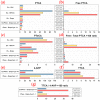
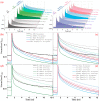
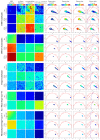

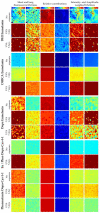

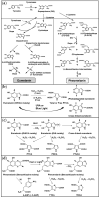

Similar articles
-
In vivo melanin 3D quantification and z-epidermal distribution by multiphoton FLIM, phasor and Pseudo-FLIM analyses.Sci Rep. 2022 Jan 31;12(1):1642. doi: 10.1038/s41598-021-03114-0. Sci Rep. 2022. PMID: 35102172 Free PMC article.
-
UVA-induced oxidative degradation of melanins: fission of indole moiety in eumelanin and conversion to benzothiazole moiety in pheomelanin.Pigment Cell Melanoma Res. 2012 Jul;25(4):434-45. doi: 10.1111/j.1755-148X.2012.01011.x. Pigment Cell Melanoma Res. 2012. PMID: 22551214
-
Photoprotective actions of natural and synthetic melanins.Chem Res Toxicol. 1998 Dec;11(12):1434-40. doi: 10.1021/tx980114c. Chem Res Toxicol. 1998. PMID: 9860484
-
"Fifty Shades" of Black and Red or How Carboxyl Groups Fine Tune Eumelanin and Pheomelanin Properties.Int J Mol Sci. 2016 May 17;17(5):746. doi: 10.3390/ijms17050746. Int J Mol Sci. 2016. PMID: 27196900 Free PMC article. Review.
-
Photodegradation of Eumelanin and Pheomelanin and Its Pathophysiological Implications.Photochem Photobiol. 2018 May;94(3):409-420. doi: 10.1111/php.12837. Epub 2017 Oct 26. Photochem Photobiol. 2018. PMID: 28873228 Review.
Cited by
-
Fluorescence Lifetime Imaging Microscopy Analysis of Isolated Melanosomes.Chemphyschem. 2025 Aug 4;26(15):e202500034. doi: 10.1002/cphc.202500034. Epub 2025 Jun 15. Chemphyschem. 2025. PMID: 40492450 Free PMC article.
-
Quantitative melanoma diagnosis using spectral phasor analysis of hyperspectral imaging from label-free slices.Front Oncol. 2023 Nov 17;13:1296826. doi: 10.3389/fonc.2023.1296826. eCollection 2023. Front Oncol. 2023. PMID: 38162497 Free PMC article.
-
Significance of melanin distribution in the epidermis for the protective effect against UV light.Sci Rep. 2024 Feb 12;14(1):3488. doi: 10.1038/s41598-024-53941-0. Sci Rep. 2024. PMID: 38347037 Free PMC article.
-
FLUTE: A Python GUI for interactive phasor analysis of FLIM data.Biol Imaging. 2023 Nov 6;3:e21. doi: 10.1017/S2633903X23000211. eCollection 2023. Biol Imaging. 2023. PMID: 38487690 Free PMC article.
-
Exploration of Compounds with 2-Phenylbenzo[d]oxazole Scaffold as Potential Skin-Lightening Agents through Inhibition of Melanin Biosynthesis and Tyrosinase Activity.Molecules. 2024 Sep 2;29(17):4162. doi: 10.3390/molecules29174162. Molecules. 2024. PMID: 39275009 Free PMC article.
References
MeSH terms
Substances
LinkOut - more resources
Full Text Sources
Research Materials

